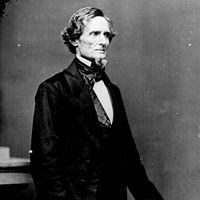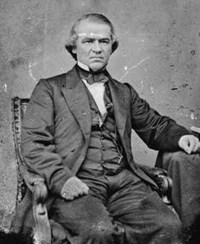
An enormous range of beliefs flowed across the political landscape of pre-Civil War America, and this is reflected in the rise and fall of a dozen different political parties that tried and failed to find a unifying political strategy that would end sectional strife. Only the events of April 12, 1861 would clarify this landscape and politicians of every description welcomed it… at first.
- The White House and President's Park
William McKinley
- Manassas National Battlefield Park
Salmon P. Chase

US Senator from Ohio, Governor of Ohio, Treasury Secretary under President Lincoln, and sixth Chief Justice of the United States, Salmon P. Chase was one of the most prominent members of the new Republican Party, warned of the "Slave Power conspiracy" and created the slogan "Free Soil, Free Labor, Free Men."

When Louisiana seceded from the Union, Benjamin resigned his Senate seat and was appointed Attorney General of the Confederacy by his close personal friend, Jefferson Davis. In September 1861 he was appointed Secretary of War, though ultimately had strong disagreements with President Davis over the conduct the war, and quarreled with generals P.G.T. Beauregard and "Stonewall" Jackson.
- Fort Sumter and Fort Moultrie National Historical Park
Francis Wilkinson Pickens

Governor Francis Pickens of South Carolina witnessed the secession of his state from the Union and directed South Carolina's militia to create a ring of fire around Fort Sumter before the creation of the Confederacy. His term ended in 1862. After the defeat of the Confederacy, Pickens proposed the motion at the constitutional convention for South Carolina to be readmitted into the Union.
- Fort Sumter and Fort Moultrie National Historical Park
Robert B. Rhett

Robert B. Rhett, newspaper publisher of the Charleston Mercury, advocated for secession in his paper before the American Civil War. A signer of South Carolina's Ordinance of Secession, he helped draft the Confederate States Constitution. A prominent figure in the secession movement, Rhett played a minor role in the Confederates States government, serving just one term in Congress.

Fernando Wood was a shipping magnate, nine-term Democratic Congressman and three-term Mayor of New York City in the middle part of the 19th century. He is best known for proposing that New York City secede from the Union and declare itself an open city in order to protect its lucrative cotton trade with the Confederacy.
- Fort Sumter and Fort Moultrie National Historical Park
Christopher Memminger

Andrew Johnson was a Tennessee politician and Vice President of the United States who ascended to the presidency in April 1865 upon the death of Abraham Lincoln. His benign approach to the reintegration of Southerners into the Union following the Civil War contributed to his impeachment in 1868, which failed in the Senate by a single vote.
Last updated: October 15, 2021
Success
Thank you. Your feedback has been received.
Error
alert message





